 By Paul Hausser, Envisn, Inc.
By Paul Hausser, Envisn, Inc.
The first pandemic in our lifetime has resulted in more and more businesses and organizations requiring nearly everyone to work from home. For many this has been a real eye opener. Suddenly thrust into having to do virtually everything remotely, many found that they were lacking the high-speed bandwidth needed and the tools necessary to manage this successfully. And with the lockdown at different stages of its life cycle depending on where you live, many are finding that returning to work will be vastly different from what they were used to.
For many of us it won’t be business as usual. How and where employees work may have changed, and in many cases there may not even be the same resources as before because of layoffs and furloughs. And even for those returning to where they worked before, the environment will likely be changed from what it was previously because of social distancing. So what might this mean for those people whose work is focused on maintaining and supporting a Cognos environment?
Some obvious signs about the new working environment are already appearing:
- More employees will be working remotely on a permanent basis.
- In many companies and organizations there will be fewer employees to do the work.
- For those returning to the work environment it will be different. Social distancing and less personal contact will likely be the rule.
- Informal, spontaneous meetings between co-workers may be a thing of the past. Casual conversations with colleagues have always been the number one means of sharing information at work.
- Simply sharing information between coworkers will likely be more difficult, both for those working remotely and in their place of work.
- Working remotely puts a premium on high speed data lines and having the right tools to do the work.
Expanding on the subject of tools needed to successfully manage Cognos remotely, we can see that these are essentially the same things needed as managing Cognos on site. But with fewer resources, and less input from coworkers, they become even more important. They generally fall into five categories:
- Diagnostics – The ability to easily identify problems and fix them. Broken lineage, missing object dependencies, etc.
- Information – Detailed documentation, groups/roles memberships, security/access privileges, data sources, access to all metadata, triggers, job schedules, etc.
- Routine tasks – Deployments, recycle-bin, version control, user administration, security administration, capabilities by account
- Performance – System performance, report/query run times
- Usage – Cognos usage by user account, by object, package, model, etc.
Simple Rules
There are two simple rules that people who administer and manage Cognos live by every day whether they know it or not; they need access to everything in Cognos and they need to be able to manage it. The problem for many of them is that without the right tools they cannot get access to all of its metadata, and without that it’s difficult to fully manage it. The tools needed don’t come with Cognos itself.
And equally important, having the right tools helps all developers and administrators do more and do it better. Let’s take a look at how the right tools can help you with some of the tasks listed above.
Diagnostics
In Figure 1 we see all of the objects in a single folder location that will not function because of missing objects. In a typical Cognos environment without diagnostic tools, 15 – 18 percent of the content at any one time will not work because of issues like these.
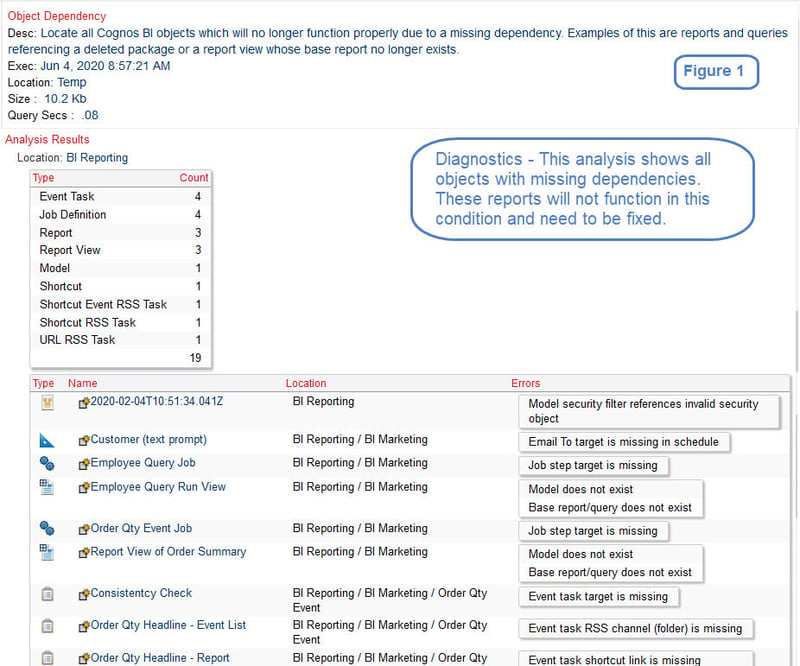
Information
Something as simple as identifying and managing all triggers across the Cognos environment can be essential information to have access to. Figure 2 identifies all triggers sorted by name and location. The same trigger could be used in multiple locations.
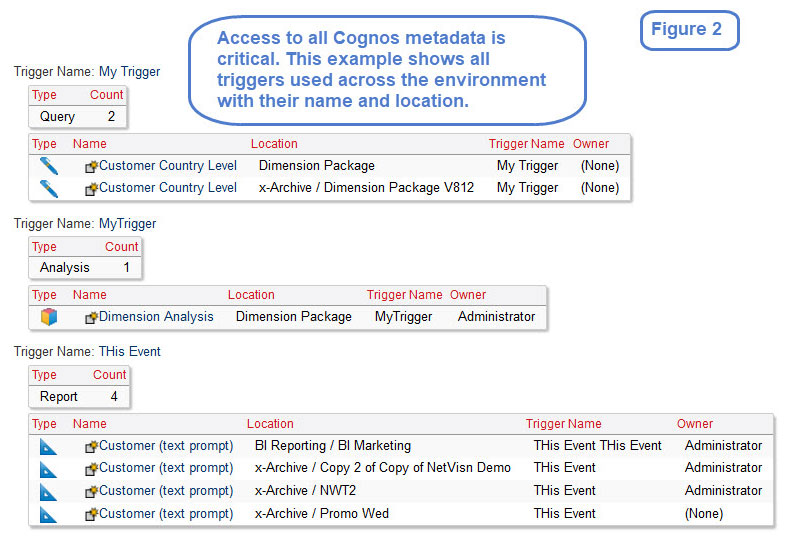
Groups and Roles
Groups and Roles play an important part in managing access within Cognos. But without the right tools it’s sometimes impossible to see how they all relate to each other since some roles are often part of other roles along with individual accounts. In Figure 3 we see these laid out in a simple two-dimensional graphic that makes understanding their relationship to each other very clear.
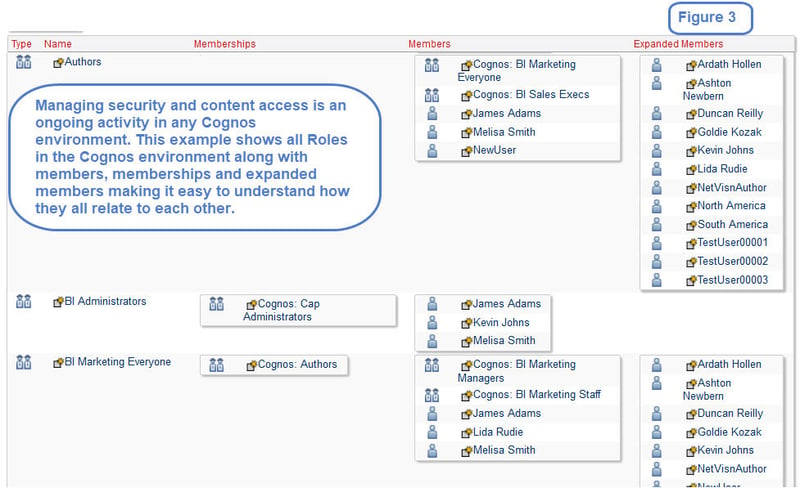
Knowing exactly where certain data sources are used across the environment is often critical information, especially if dependent data sources are going through a change process or for SOX requirements. In Figure 4A we see how being able to create an analysis with precise requirements around needs and how the output is to be organized can be helpful to answering almost any question about data usage across the Cognos environment. Here we want to identify where all tables and columns from the AUDIT database are being used.
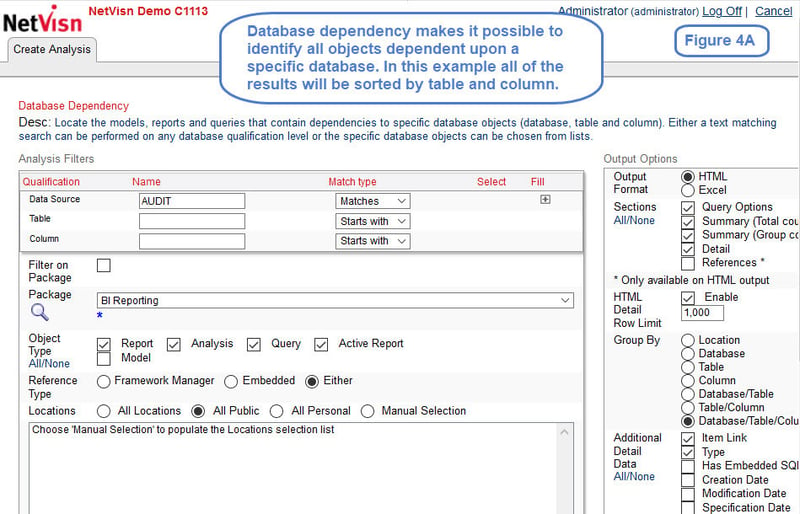
In Figure 4B we see where certain tables and columns are being used and their location.
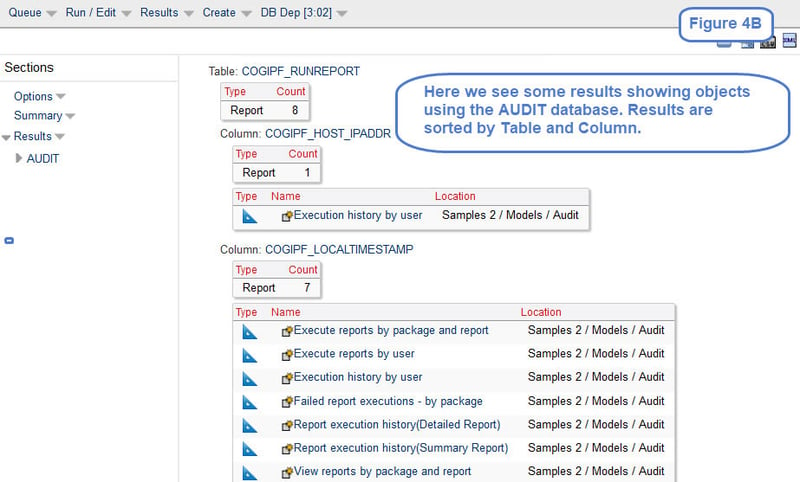
Routine Tasks
Managing content transfers across Cognos instances can be a challenge without the right tools. All too often errors are made around things like selecting the right data sources, security profile, etc. What’s needed are tools that can manage that and a whole lot more including content life cycle management capabilities.
In Figure 5A we see some examples of saved deployments that are done as needed or a scheduled basis.
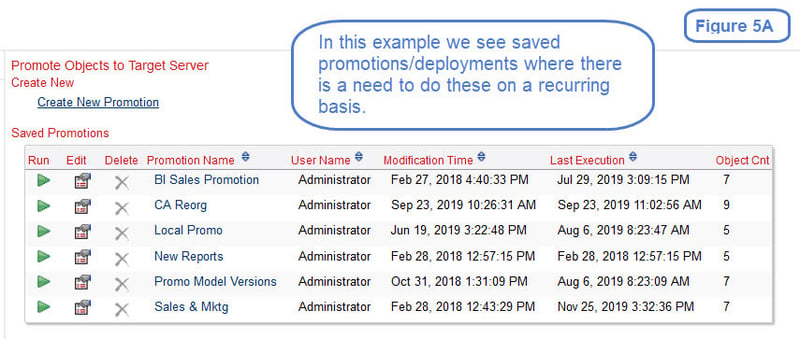
In Figure 5B we see the confirmation page of a recurring deployment where only those objects that need to be updated are changed and any potential issues are highlighted.
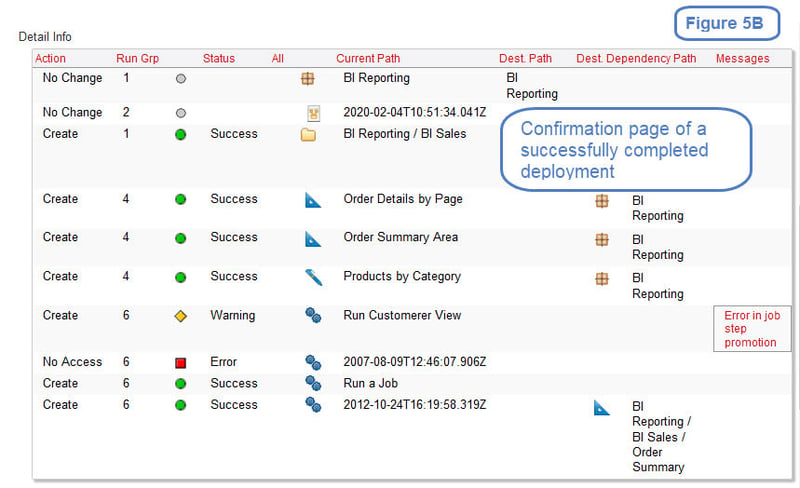
An effective version control capability should be part of any Cognos environment. In Figure 6 we see how being able to compare two recent versions of the same report can be helpful. Effective version control is really an essential requirement of good life cycle management of Cognos content.
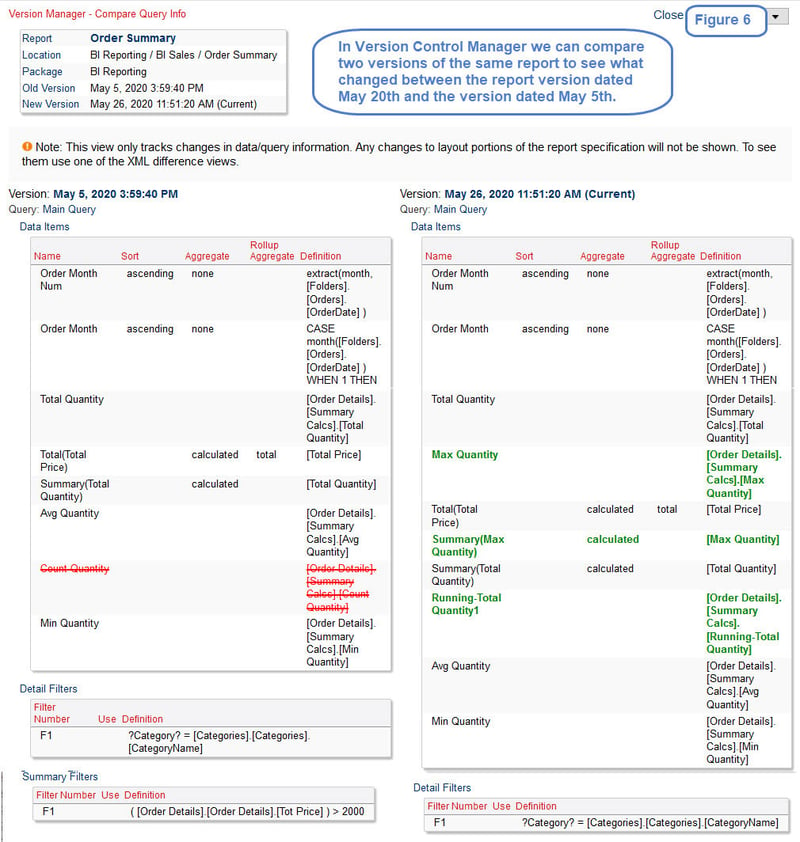
Managing almost any Cognos environment today is a challenge, let alone trying to do it remotely. Remote management of Cognos virtually requires having effective tools to do it successfully. In the examples shown above we have used Envisn’s NetVisn product to highlight some of the capabilities that can help insure that you get it right when doing work remotely or at your place of work.
The right tools also help in standardizing procedures for how routine tasks are done, diagnosing and fixing problems before users even see them, and expanding the effectiveness of all that Cognos brings to the table in both reporting and analytics.
© 2020 Envisn, Inc. – All rights reserved. Harness the True Power of Cognos






